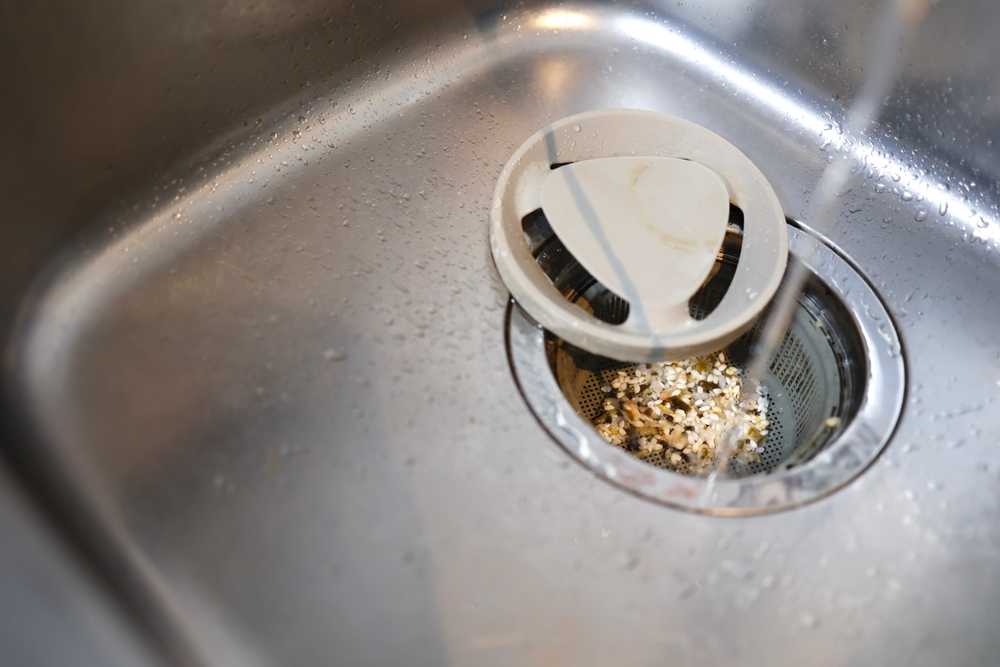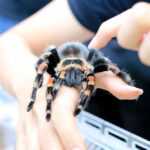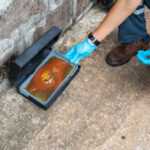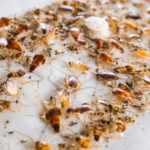How to Identify House Cockroaches: Types, Signs, & Prevention
Dealing with house roaches? Learn how to identify them, the risks they bring, and effective ways to keep your home roach-free.
How to Safeguard Your Home from House Roaches: Top Tips and Strategies
House roaches invade homes in search of food, water, and shelter. Learn how to identify the common roach species, control infestations, and prevent them from coming back. This article provides practical tips and strategies for dealing with house roaches.
- Four common cockroach species infesting homes include German, American, Oriental, and Brown-Banded, each requiring specific control strategies.
- Effective cockroach management involves sanitation, sealing entry points, and using bait stations, along with regular maintenance and inspections. Pest control services can support these efforts for comprehensive protection.
- Professional pest control services offer thorough inspections, customized treatment plans, and follow-ups, ensuring effective long-term roach elimination.
Common Types of House Roaches
Cockroaches are a diverse group of insects, but when it comes to home infestations, four cockroach species are the most common: the German cockroach, American cockroach, Oriental cockroach, and Brown-Banded cockroach. Each of these species has unique characteristics and habits, so correctly identifying them is crucial for effective control measures.
The four most common species of cockroaches that infest homes are:
- German cockroach
- American cockroach
- Oriental cockroach
- Brown-Banded cockroach
Each of these species has unique characteristics and habits, so correctly identifying them is crucial for effective control measures.
German Cockroach (Blattella germanica)
German cockroaches are small, light brown insects identifiable by two dark, parallel stripes running down their backs. Measuring about half an inch in length, these pests are prolific breeders and can quickly multiply into a severe infestation of german roaches if not addressed.
Typically found in kitchens and bathrooms, German cockroaches favor warm, humid environments close to food and water sources. They commonly hide under stoves, dishwashers, and refrigerators, making these areas hotspots for infestations. Their rapid reproduction and adaptability to human environments make them particularly troublesome.
Managing a German cockroach infestation involves sanitation, baiting, and sealing entry points. Regular monitoring and swift action can prevent these pests from taking over your home.
American Cockroach (Periplaneta americana)
American cockroaches are the giants of the roach world, easily recognizable by their large size and reddish-brown color. They feature a distinctive yellowish figure-eight pattern behind their heads, making them easy to identify. These cockroaches can grow up to 2 inches in length, with some even reaching over 3 inches.
Preferring warm, damp environments, American cockroaches are commonly found in basements, utility rooms, and other areas with high moisture levels. They often enter homes during the summer, emerging from the sewer system in search of food and warmth.
Controlling American cockroaches requires controlling cockroaches by keeping areas dry, sealing entry points, and placing bait stations where they are commonly found.
Oriental Cockroach (Blatta orientalis)
Oriental cockroaches are large, dark brown insects often referred to as “water bugs” due to their preference for moist environments. Female cockroaches of this species are wingless, while males have short wings, making them less mobile compared to other cockroaches.
These cockroaches thrive in cooler, damp areas such as crawl spaces, basements, and drains. Their presence in these locations can be a sign of moisture problems, which need addressing to prevent infestations.
Brown-Banded Cockroach (Supella longipalpa)
The Brown-Banded cockroach is easily identifiable by the light brown bands across its wings and abdomen. Unlike other species, brown banded cockroaches prefer drier environments and are often found in bedrooms, closets, and furniture.
Their small size and ability to hide in tiny crevices make them challenging to detect and control. Regular inspections and targeted treatments are crucial for managing Brown-Banded cockroach infestations effectively.
Why Do Roaches Invade Homes?
Cockroaches invade homes primarily in search of food, water, and shelter. These pests are highly adaptable and can survive in a variety of environments, but human homes provide an ideal combination of resources that attract them. Knowing why cockroaches invade homes aids in developing effective prevention and control strategies.
German cockroaches, for instance, are particularly troublesome due to their rapid reproduction and ability to thrive in human environments. Keeping a clean and clutter-free home helps deter these resilient pests.
Food Sources
Cockroaches are particularly drawn to food debris like crumbs, spills, and improperly stored pet food. They are opportunistic feeders and can survive on a wide variety of food sources, including crumbs, spilled liquids, and unwashed dishes. Storing food in airtight containers significantly reduces the likelihood of attracting these pests.
Proper food storage and cleanliness play key roles in preventing cockroach infestations. Sealing food in airtight containers not only prevents roach access but also retains food freshness.
Water Sources
Moist environments are highly appealing to cockroaches due to their need for hydration. Areas with high moisture levels, such as leaks and damp spots, attract these pests. Regularly checking for and repairing leaks can help eliminate moisture and prevent sewer roaches that attracts roaches.
Fixing plumbing leaks and keeping kitchens and bathrooms dry can prevent cockroaches, which thrive in moist conditions.
Shelter and Hiding Places
Clutter and small gaps in structures create ideal hiding spots for cockroaches, complicating their elimination. Cockroaches prefer cluttered spaces and small crevices to hide, making it important to keep areas tidy and seal gaps to minimize their hiding spots.
Regular decluttering and maintaining tidy surfaces effectively reduce roach hiding areas. Sealing entry points, such as cracks and gaps in walls, can prevent cockroaches from finding new hiding spots in the home.
How Roaches Enter Your Home
Cockroaches can find their way into homes through various entry points and methods, depending on environmental conditions and human activity. Potential entry points include chimneys, vents, air ducts, and even the sewer system. Knowing these entry methods helps in implementing effective preventive measures.
Cooler weather drives cockroaches to seek warmth and food indoors, making homes particularly vulnerable during colder months, especially to indoor roaches.
Cracks and Gaps
Gaps, holes, or cracks in foundations and walls are potential entry points for cockroaches. Routine inspections should identify and repair potential cockroach entry points. Sealing these gaps can significantly reduce the likelihood of roaches entering your home.
Sealing cracks and crevices is key to preventing cockroach infestations. Regular home maintenance and inspections ensure all potential entry points remain sealed, deterring future infestations.
Plumbing and Drains
Roaches can travel through pipes and drains, posing a significant risk to kitchens and bathrooms. Leaky plumbing and damp areas create the necessary moisture that attracts roaches, making areas around sinks and bathtubs particularly vulnerable.
Repairing plumbing leaks and keeping kitchens and bathrooms dry are critical to preventing infestations.
Open Doors and Windows
Unsealed doors and windows are common entry points for cockroaches. Installing door sweeps can help keep cockroaches out. Additionally, using caulk or weather stripping will further block their entry through doors and windows. Weather stripping acts as a barrier, preventing cockroach entry.
When weather stripping is absent or damaged, it creates opportunities for cockroaches to enter. Ensuring that doors and windows are properly sealed can significantly reduce the risk of roach infestations.
Effective Strategies for Cockroach Control
Effective cockroach management requires a combination of sanitation, exclusion, and targeted treatments. Controlling cockroach populations involves a mix of sanitation, sealing entry points, and baiting techniques. Implementing these strategies can help manage and prevent infestations.
Sealing cracks and crevices is crucial to prevent cockroaches from entering a home. When combined with proper sanitation and bait stations, these methods effectively control cockroach populations.
Sanitation Practices
Regular vacuuming and removing food waste are essential for managing cockroach populations. Regularly cleaning food spills and promptly taking out the trash help deter cockroach infestations.
Regular vacuuming can remove food debris and cockroach droppings, which are essential for reducing the population. Deep cleaning neglected areas, like behind appliances, can significantly reduce roach habitats.
Sealing Entry Points
Cockroaches can gain access to your home through various openings, including cracks, gaps, and poor seals around doors and windows. Common entry points are tiny openings in walls, foundations, around windows and doors, and through plumbing and drains.
Sealing methods like caulk for cracks and gaps, along with weather stripping for doors and windows, are effective in preventing roaches from entering your home. Regular home maintenance and inspections ensure all potential entry points remain sealed, deterring future infestations.
Using Cockroach Bait
American cockroaches are commonly found in kitchen drawers, behind refrigerators, and under kitchen sinks, making these ideal spots for bait stations. Bait stations are an effective tool for reducing roach populations when strategically placed.
Placing bait in areas where roaches frequently hide increases the likelihood of consumption, enhancing infestation control. Using bait stations along with sanitation and sealing entry points enhances roach management effectiveness.
Professional Pest Control Services
Hiring professional pest control can provide efficient solutions for severe cockroach infestations, often achieving results that DIY methods cannot. Hiring pest control professionals often results in more thorough cockroach eradication than DIY methods. Professionals use advanced methods and tools, ensuring that the infestation is tackled effectively and safely.
Professional pest control service use safe and effective methods, reducing health risks linked to DIY solutions. This can be particularly important in households with children or pets, where safety is a top priority.
Thorough Inspection
A thorough inspection is the cornerstone of effective pest control. Professionals identify tiny openings in walls, foundations, and around windows and doors that allow roaches to enter. They will also check for areas where roaches can travel through pipes and drains, making kitchens and bathrooms vulnerable.
Cluttered areas, cracks, and gaps provide ideal hiding spots for roaches, including dead roaches. Professionals declutter and seal entry points, eliminating all potential hiding places.
Customized Treatment Plans
Expert pest control services create individualized treatment plans that consider the specific pest issues and household characteristics of each client. Pest control professionals tailor treatment strategies with methods like baiting and trapping based on individual infestations.
These customized strategies ensure that the treatment is effective and efficient. Experts create specific treatment strategies that may include sticky traps, baits, and targeted insecticides based on the infestation level.
Follow-Up Visits
Regular follow-up visits are crucial to ensure that any remaining roaches are effectively eliminated and to monitor for potential re-infestations. Follow-up visits should be scheduled based on the severity of the infestation, typically every few weeks to a couple of months until the problem is resolved.
These visits ensure the treatment remains effective over time and promptly address new infestations. This ongoing monitoring is essential for maintaining a roach-free home.
Preventive Measures to Keep Roaches Out
Preventing cockroach infestations requires a proactive approach. Cockroaches are attracted to homes primarily in search of food, moisture, and shelter. Implementing various preventive strategies is essential for avoiding future infestations.
Regular Maintenance
Moisture is a critical factor in attracting cockroaches, as they thrive in damp environments. Clutter can prevent drainage, creating damp areas that become attractive to roaches. Regular maintenance and inspections for moisture sources and reducing clutter help keep cockroaches at bay.
Properly sealing your home and eliminating damp areas is crucial.
Proper Food Storage
Proper food storage prevents cockroaches from being able to attract cockroaches to your home. Cockroaches are attracted to crumbs, spills, pet food, and dirty dishes; using airtight containers helps eliminate these food sources.
Covering and correctly storing pet food minimizes attractants for roaches. These food storage strategies significantly reduce the likelihood of cockroach infestations in your home.
Outdoor Cleanliness
A tidy yard helps eliminate potential habitats for cockroaches. Outdoor cleanliness prevents outdoor species from migrating indoors. Keeping gutters clean and free of debris prevents outdoor cockroach habitats.
Safeguarding your home from cockroach infestations involves understanding the different types of cockroaches, why they invade homes, and how they enter. The four common species—German, American, Oriental, and Brown-Banded cockroaches—each present unique challenges that require targeted control strategies.
Effective cockroach control combines proper sanitation practices, sealing entry points, and using bait stations. For severe infestations, professional pest control services offer thorough inspections, customized treatment plans, and follow-up visits to ensure complete eradication.
Preventive measures, such as regular maintenance, proper food storage, and outdoor cleanliness, are essential in keeping cockroaches out of your home. By taking these steps, you can create a roach-free environment and enjoy peace of mind knowing that your home is protected.
Frequently Asked Questions
What are the most common types of house roaches?
The most common types of house roaches that you may encounter are the German cockroach, American cockroach, Oriental cockroach, and Brown-Banded cockroach. Recognizing these species can help in effectively managing and preventing infestations.
Why do cockroaches invade homes?
Cockroaches invade homes primarily in search of food, water, and shelter, thriving in environments with food debris, moisture, and clutter. To deter them, maintain cleanliness and eliminate potential food sources.
How can I prevent cockroaches from entering my home?
To effectively prevent cockroaches from entering your home, seal any cracks and gaps, fix plumbing leaks, maintain cleanliness, and apply weather stripping around doors and windows. Taking these proactive measures can significantly deter their entry.
What are the benefits of hiring a professional pest control service?
Hiring a professional pest control service ensures thorough inspections and tailored treatment plans, leading to effective and lasting eradication of pests that DIY methods often fail to achieve. This expert approach provides peace of mind and protects your home more reliably.
What are some effective strategies for controlling cockroach infestations?
To effectively control cockroach infestations, focus on maintaining cleanliness, sealing entry points, using bait stations, and consider hiring professional pest control services for severe cases. Consistent management and prevention are key to eliminating these pests.



